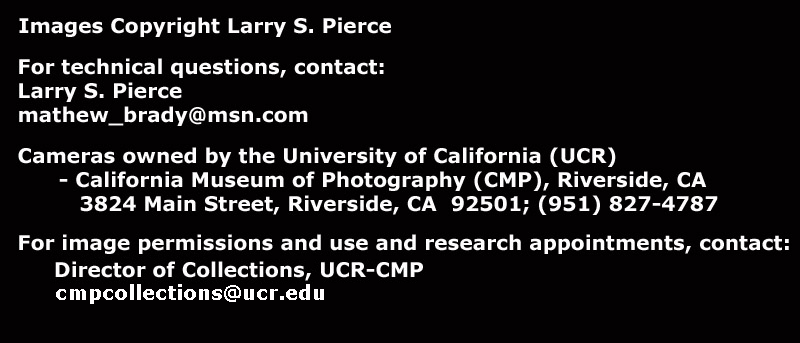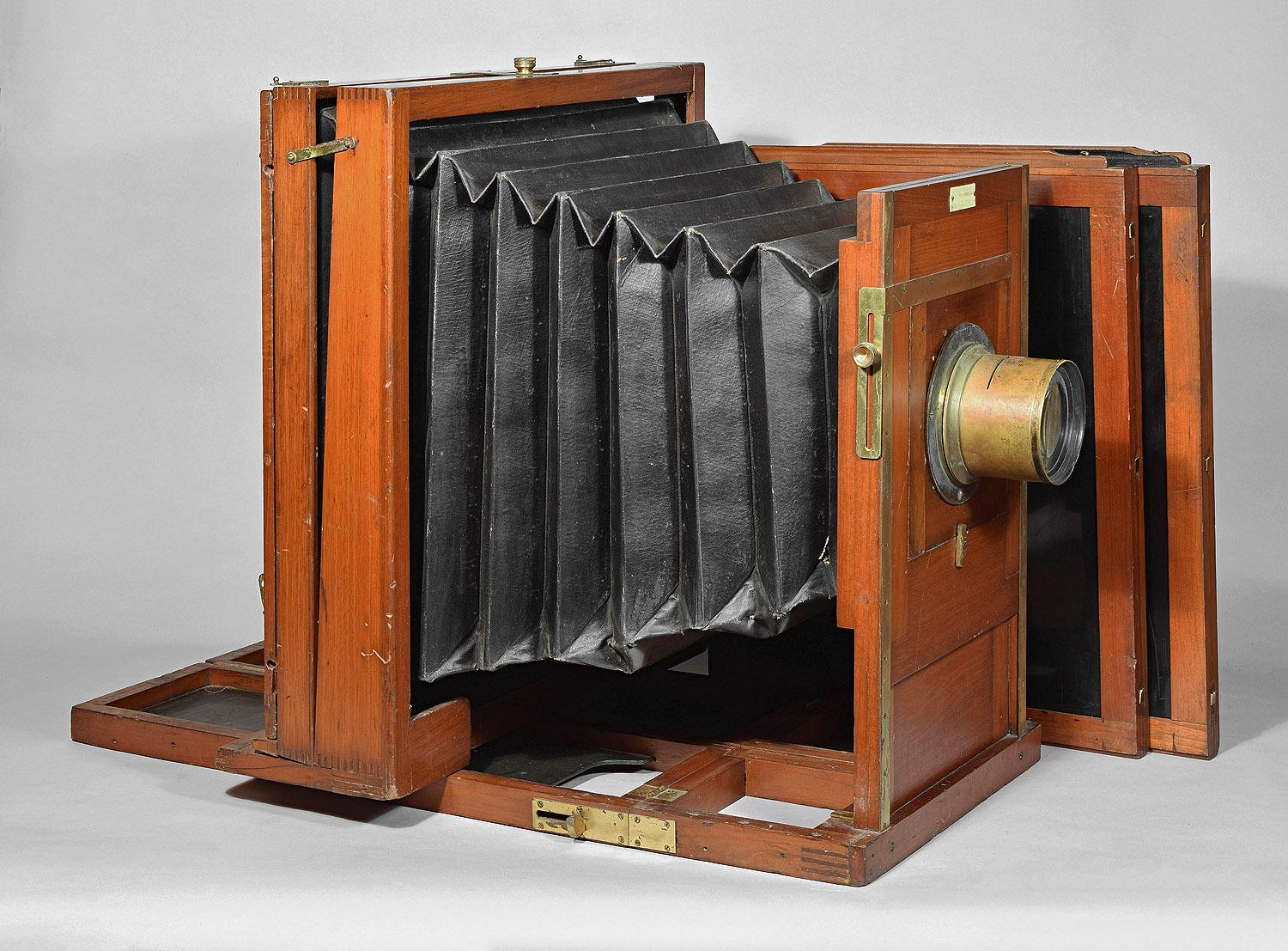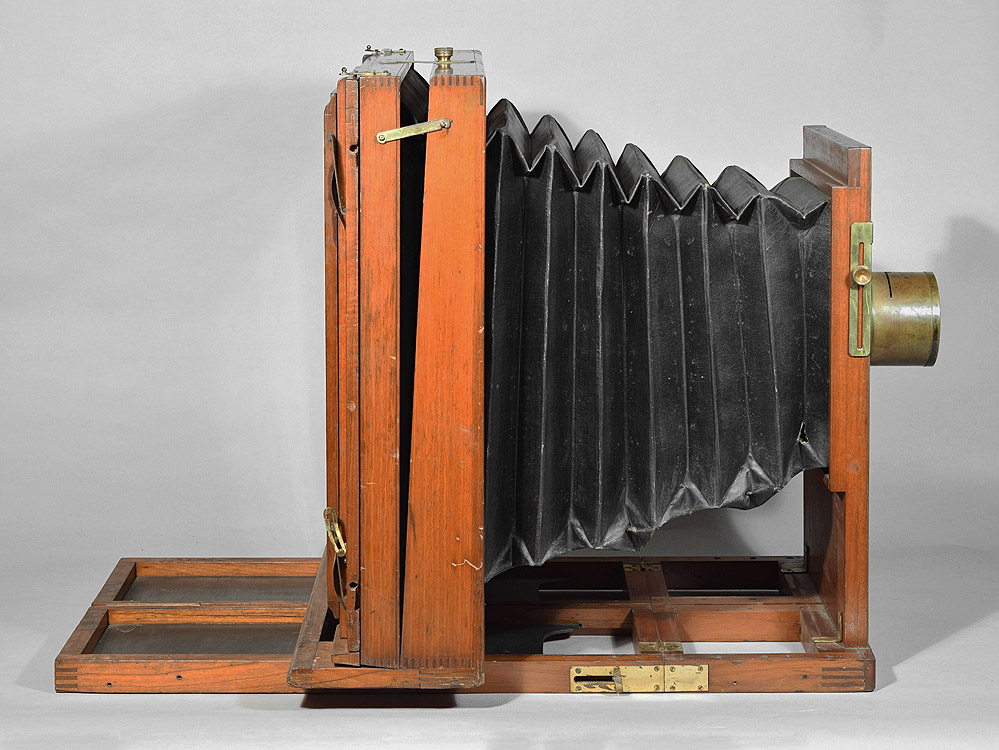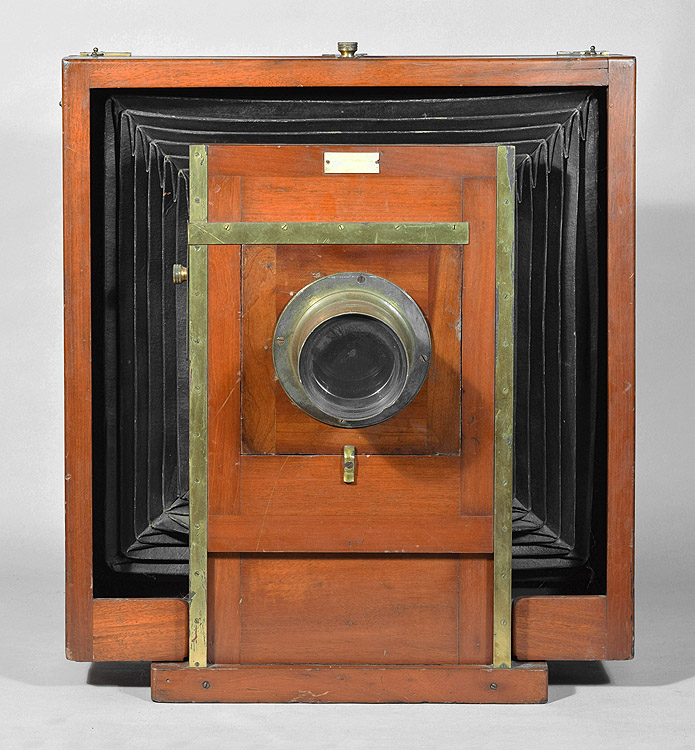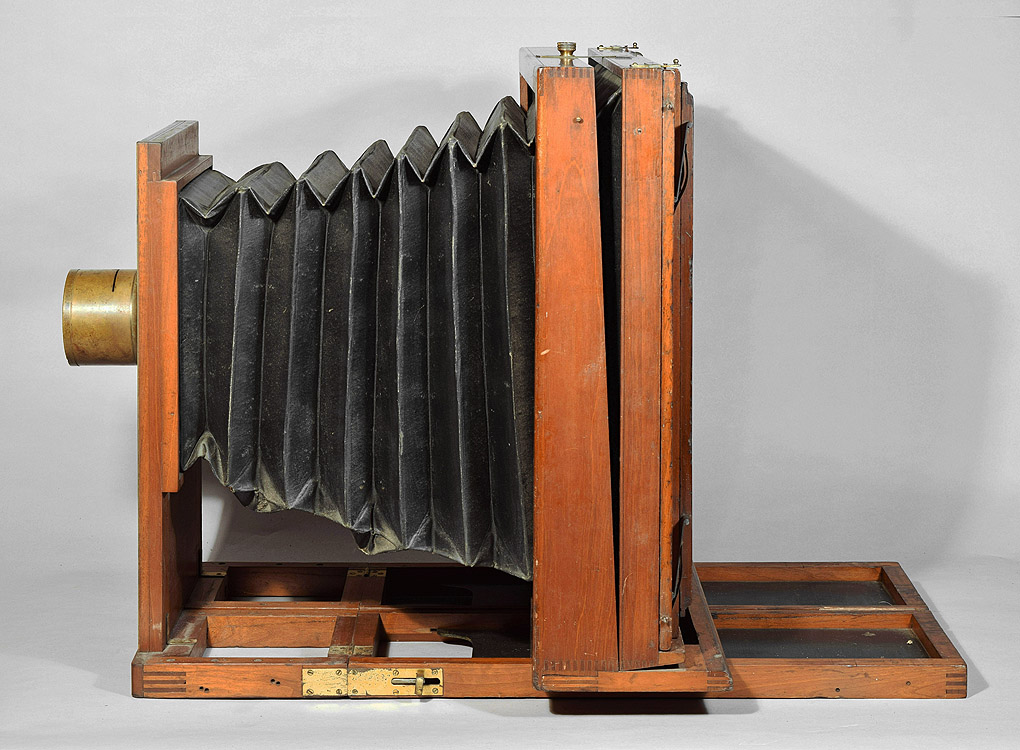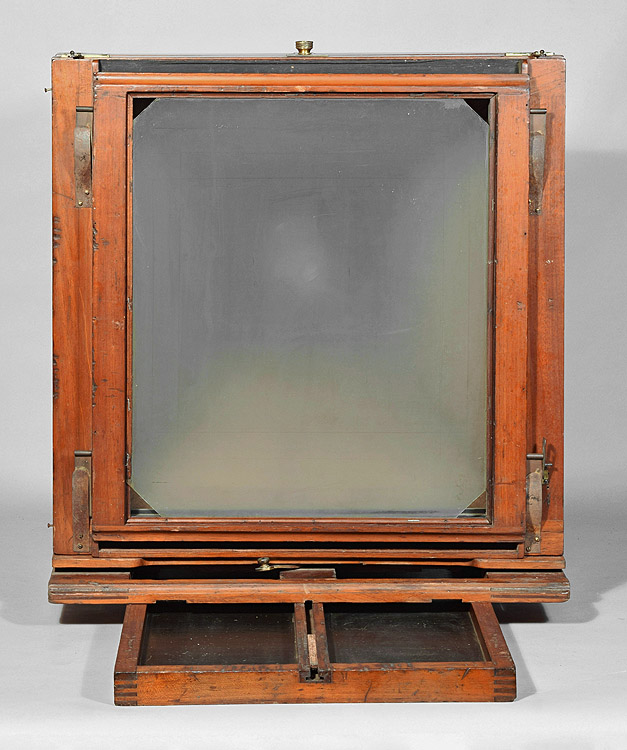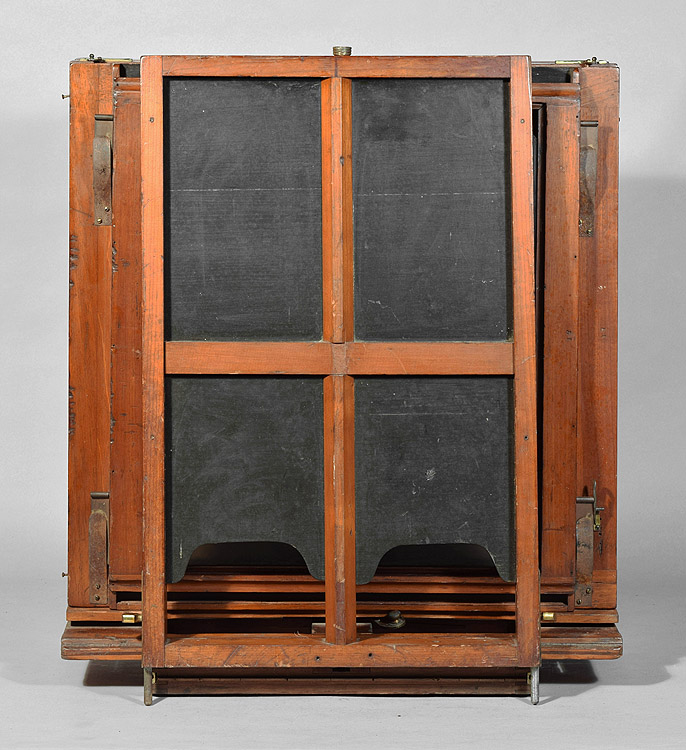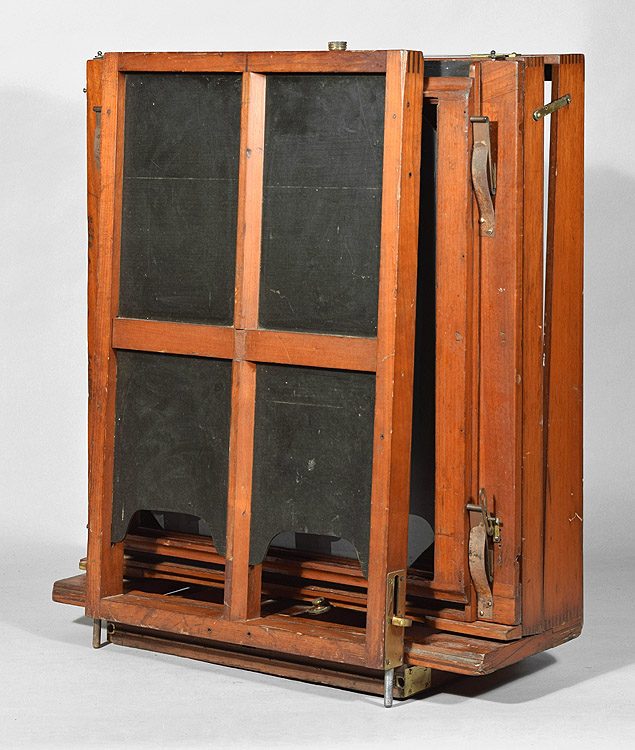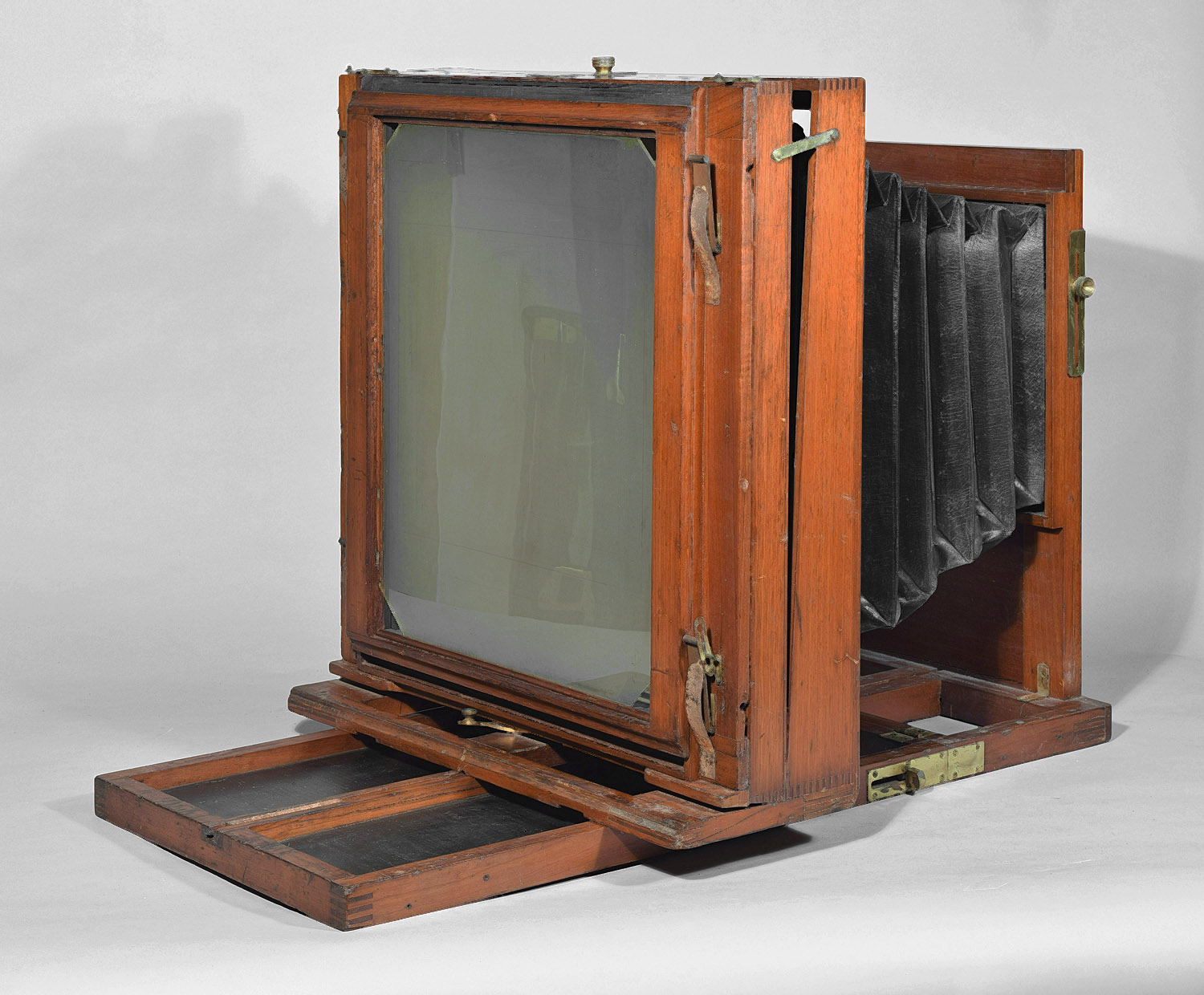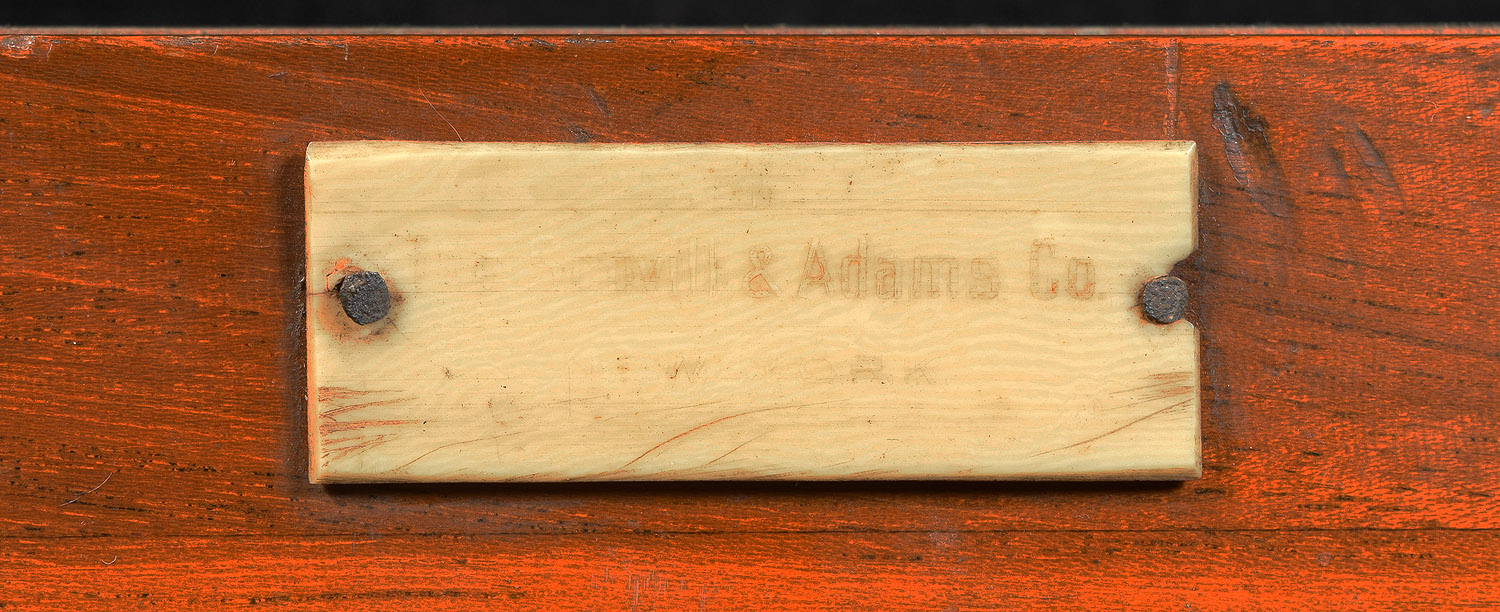The Scovill & Adams Co.
Acme Reversible Back View Camera
Variation 3.0
Manufacturer:
American Optical Co. New York, NY
factory References:
Back to American Optical
Co. / Scovill Mfg. Co. (alphabetical)
Date Introduced: ; Years
Manufactured: c.1895
Construction: rear
focus via push-pull; single or double swing;
reversing by removable back; three-piece lens board
Materials: mahogany body; cherry base;
black fabric bellows; brass hardware
Sizes Offered: at least
14x17
Notes:
Scovill / American Optical made a number of of cone or tapered bellows
cameras. The following is an excerpt from
American Optical/Scovill Back Focus Tapering Bellows Field View Cameras
- Chronology and Design detailing the history of
Scovill/American Optical camera models of this basic type.
Acme Reversible Back View Box / Back Focus Cone View Camera
Model Variations:
The Acme View Camera can be found in catalogs and advertising
approximately from 1884 through 1895, although there was a similar
Scovill tapered bellows view camera during the wet plate era (see
American
Optical New Camera Box). Depending on the catalog and the
year, the Acme was referred to as one of at least three names: Acme View
Camera, Back Focus Cone View Camera, or Reversible Back View Camera.
Despite its workmanlike design, it was highly finished, showing French
polish on the wood, draw file finish on the hardware, and screw slots
that were laboriously aligned along the length of each brass part then
filed down perfectly even with the part.
During the Scovill Mfg.
Co. era (<1889), sometimes this model's labels read: "American Optical
Co., - Scovill Mfg. Co., N.Y. Prop't'rs" but sometimes they read simply
"Scovill Mfg. Co., N.Y.". During the Scovill & Adams Co. era
(1889-1901), the labels merely read: "The Scovill & Adams Co. - New
York". Despite the relatively consistent high quality construction and
appearance, it is probable that the ones labeled American Optical were
manufactured in the New York City factory of American Optical, and those
labeled Scovill or Scovill and Adams were manufactured in the New Haven,
CT factory formerly the Samuel Peck & Co. factory.
So far, four
variations have been seen:
Acme
Reversible Back View Camera Variation 1.0: This is the
camera as shown in the advertising, including a ~2" thick removable,
reversible back. To take a photograph, the back's ground glass frame is
slid out and replaced by the plate holder. All examples are marked
Scovill or Scovill & Adams, and therefore thought to have been made in
Scovill's New Haven, CT factory, formerly the Samuel Peck & Co. factory.
Acme
Reversible Back View Camera Variation 1.5: This variation,
being represented by only one example so far, is identical to Variation
1.0 except that it has rack and pinion focus rather than push-pull
focus.
Acme
Reversible Back View Camera Variation 2.0: This variation
also has a removable, reversible back, but it also has an interior
ground glass frame that is released via a lever. The plate holder would
then be inserted into the hole vacated by the ground glass frame. This
variation is assumed to be c.1885, since this same back is pictured in
1885 advertising for the
American
Optical Ripley Camera. It may, therefore, be the first
variation of the Acme chronologically. But why then would the
advertising engraving show the Variation 1.0, above. I believe that
Variation 2.0 was a very short lived, expensive to produce version of
the Acme, the Variation 1.0 being the original version made before
Variation 2.0, but also made after Variation 2.0 well into the Scovill &
Adams era.
Acme
Reversible Back View Camera Variation 3.0: This variation
has yet a third variation of removable, reversible back, which, in this
case, has spring back that, unlike the other variations, does not have
to be removed to insert a plate holder - a very handy improvement. It
has a complex set of four springs that can be set open, allowing the
plate holder to be easily slid under it, then released to tightly hold
the plate holder in place. This type of back is also seen in other high
end American Optical cameras of the Scovill & Adams Co. era, such as the
Compact
View Variation 1.0, the
Compact
View / Irving View Variation 2.0, the
Elm City
View, the
Irving
View Variation 1.0, the
Irving
View Variation 1.2, and the
Star View
Camera.
American Annual of Photography and Photographic Times Almanac for
1896, The Scovill & Adams Co., 1895, ads
p. 69 ("a new camera)
American Annual of Photography and Photographic Times Almanac for
1897, The Scovill & Adams Co. (New York, NY),
1896, ads p. 67 (still "a new camera")
American Annual of Photography and Photographic Times Almanac for
1898, The Scovill &
Adams Co. (New York, NY), 1897, ads p. 70
(still "a new camera")
American Annual of Photography and Photographic Times Almanac for
1899, The Scovill &
Adams Co. (New York, NY), 1898, ads p. 60
(still "a new camera")
George Murphy (New York, NY) Catalog, April 1898, p. 20 (as the
Eagle Reversible Back View Camera)
American Annual of Photography and Photographic Times Almanac for 1900,
The Scovill & Adams Co. (New York, NY), 1899, ads
p. 89
